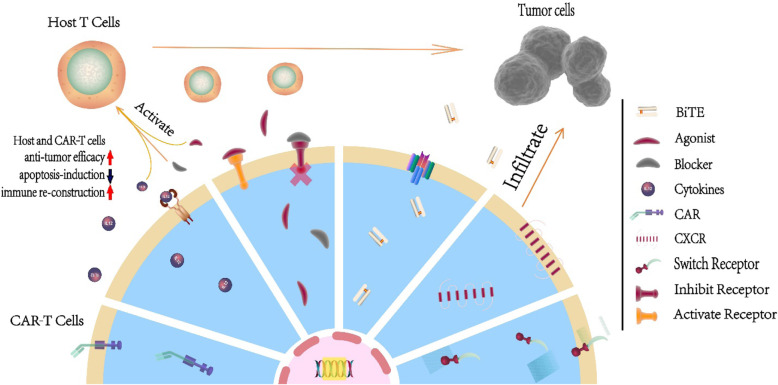Fig. 2.
The antitumor mechanisms of fourth-generation and next-generation CAR-T cells. With the aid of transduced cytokines and the agonist of the T cell receptor, CAR-T cells self-activate through autocrine and paracrine mechanisms and stimulate host T cells to regain antitumor efficacy. In addition, blockade of the inhibitory receptor prevents the apoptosis induced by receptors such as PD-1, which reconstructs the host immune system. Furthermore, a BiTE facilitates CAR-T cell and host T cell infiltration into tumor sites and the interaction between T cells and tumor cells. For tumors with a strong TME, artificially transduced CXCRs guide CAR-T cells to the tumor and express chemokines at high levels, a key method by which the tumor modulates other immune cells and forms the TME. Last but not least, we illustrate switch receptors, which are assembled from the extracellular domain of the inhibitory receptor and the intracellular domain of the activating receptor

